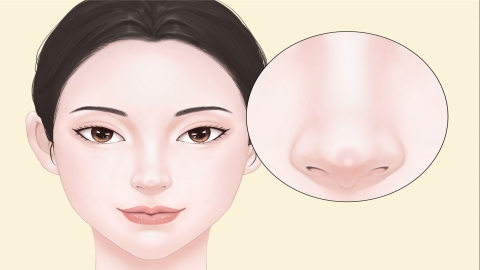What should be noted after undergoing non-surgical rhinoplasty with injections?
Generally, non-surgical rhinoplasty is a cosmetic procedure that improves the shape and contour of the nose by injecting fillers. After undergoing non-surgical rhinoplasty, it is important to adjust your diet, protect against sun exposure, avoid local pressure, refrain from strenuous exercise, and attend regular follow-up appointments. A detailed explanation is as follows:

1. Adjust Your Diet
After undergoing non-surgical rhinoplasty, you should avoid consuming spicy, irritating foods and alcohol. These substances may increase the burden on the skin, stimulate oil secretion, and potentially cause skin inflammation. It is recommended to consume foods rich in vitamins and proteins, which can aid in skin recovery and healing.
2. Protect Against Sun Exposure
In the weeks following non-surgical rhinoplasty, you should avoid direct sun exposure, especially during midday hours. Ultraviolet rays from the sun may affect the effectiveness of the filler and lead to issues such as pigmentation. Therefore, it is advisable to take sun protection measures during this period, such as wearing a wide-brimmed hat and applying sunscreen.
3. Avoid Local Pressure
For a period after the injection, especially within the first 24 hours, you should avoid touching or pressing on the injection site with your hands. This is because the filler requires time to stabilize and shape properly after injection, and external pressure during this period may cause displacement of the filler, thereby affecting the final cosmetic outcome.
4. Avoid Strenuous Exercise
Within one week after undergoing non-surgical rhinoplasty, you should avoid engaging in strenuous physical activity or heavy labor. This is because vigorous exercise may increase blood flow to the face, thereby exacerbating swelling and bruising, which can hinder the healing of the injection site.
5. Attend Regular Follow-Up Appointments
Follow-up visits allow timely monitoring of the healing process at the injection site and enable adjustments or additional treatments as needed. Additionally, if any abnormalities occur during the recovery process, such as infection or increasing pain, prompt medical attention should be sought.
Regularly clean the skin on your nose to remove excess oil and dirt, preventing clogged pores and skin inflammation. Also, avoid frequently touching or squeezing your nose with your hands to prevent damage to the skin and soft tissues, which could lead to nasal deformity or skin laxity.




